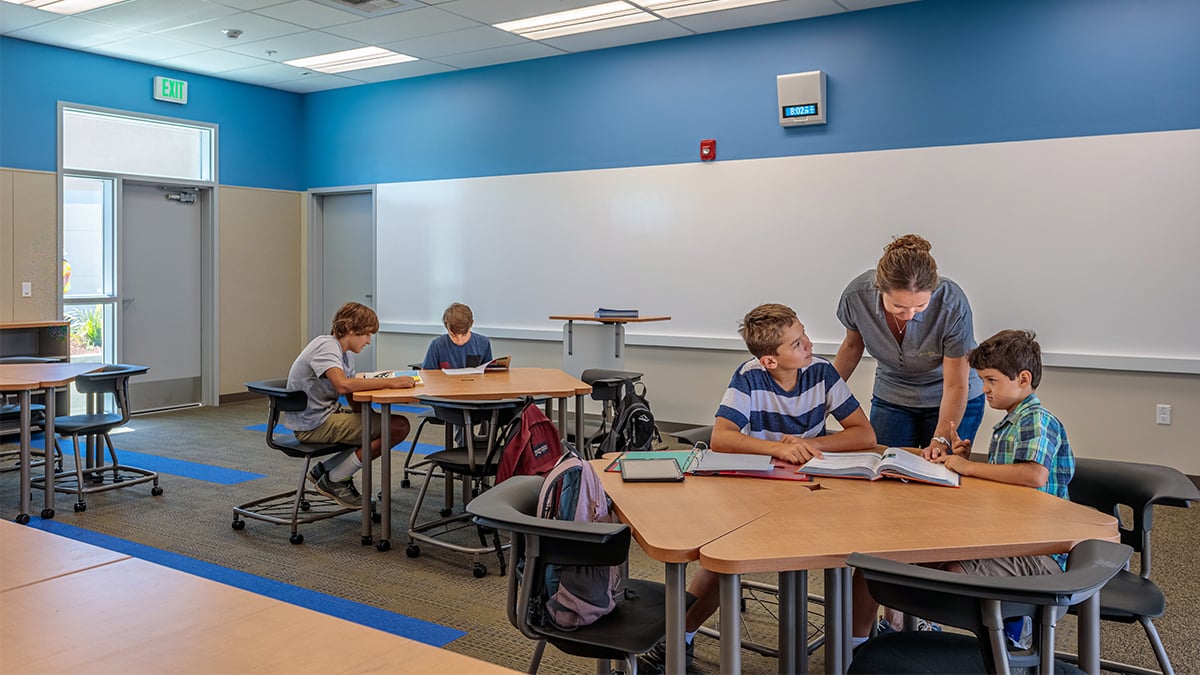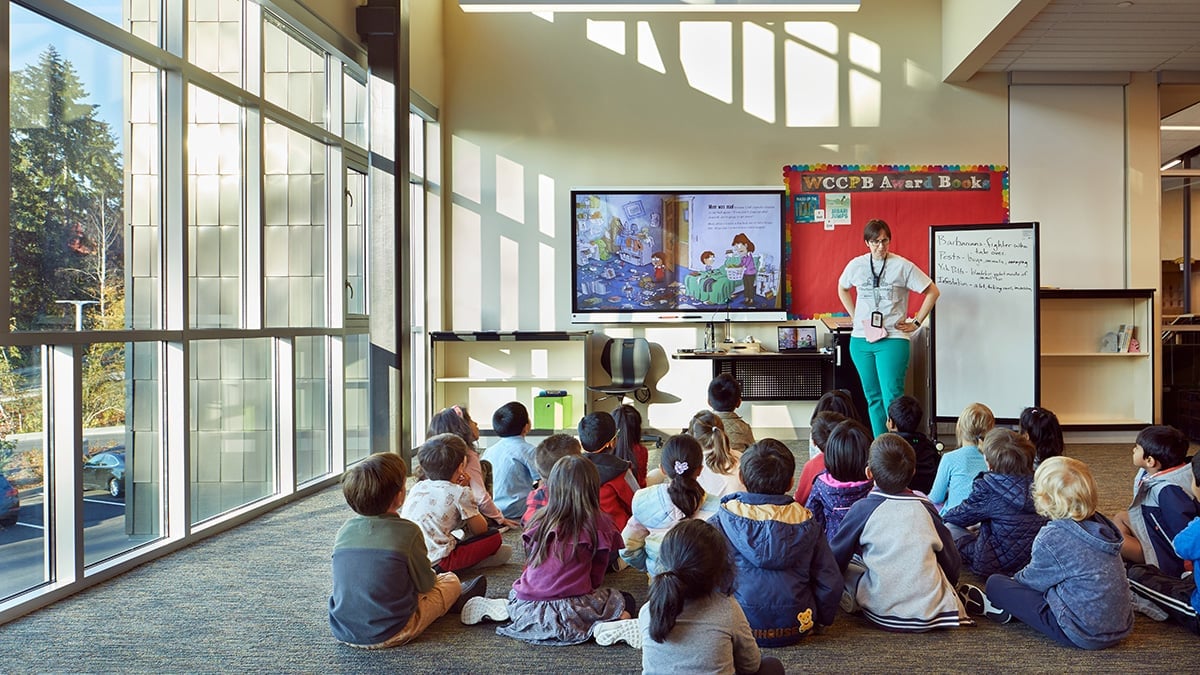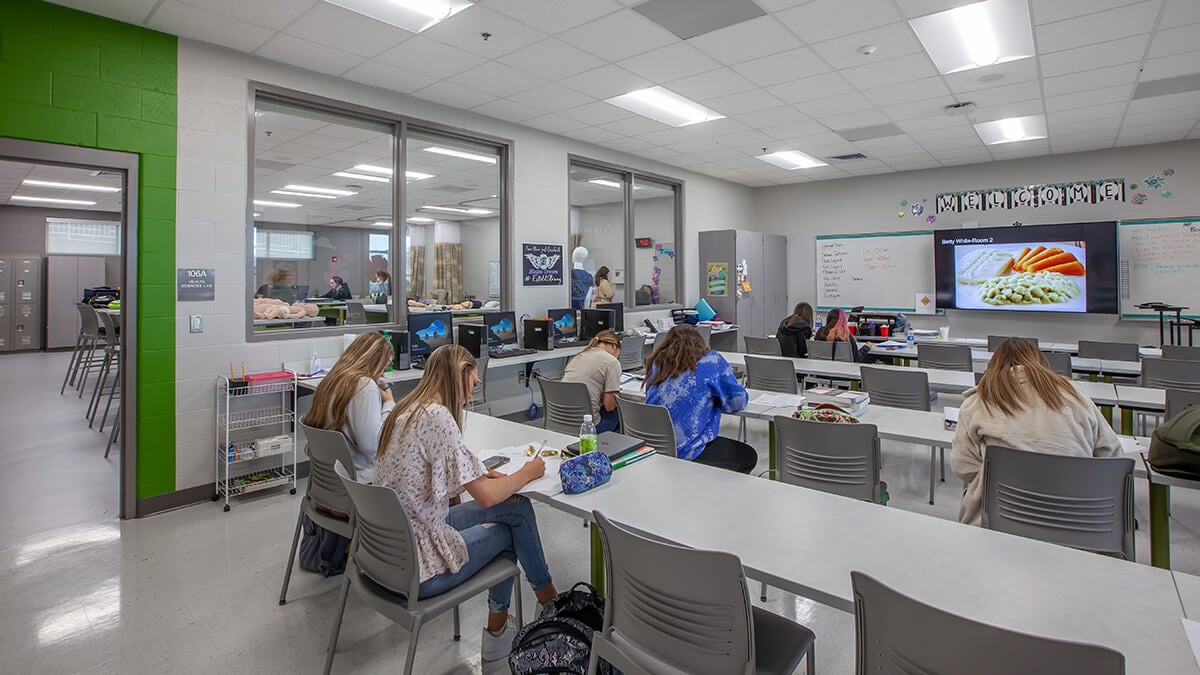- What's New
- Pricing & Purchasing
- Lead Times
- Literature & Samples
- Services & Warranties
- Careers
- Find a Rep
How to Support Teachers Through the October Blues

Former teacher and principal Emily McGinnis shares how to support educators who are feeling burned out and reflects on the importance of listening to teachers.
Most teachers know the “October Blues” all too well. With the excitement for the new school year dying down, student assessments becoming more frequent, extracurriculars in full swing, and the weather starting to turn with winter break still months away, it’s easy to understand why October might feel like the longest month.
Having spent nearly 15 years as a teacher myself, I know it felt that way for me. At KI, we hear you. We know that being an educator is challenging right now. You’re seeing gaps in learning. Student engagement is not always where you’d like it to be.
In this blog post, I’m sharing some tips on how we can get through this time together.
1. Protect Your Personal Time
Job satisfaction among teachers is trending up, but it’s still recovering from hitting an all-time low last year, according to the Merrimack College Teacher Survey.
We know that teachers’ work days often continue long after the final bell rings. According to the survey, teachers work 54 hours per week on average.
I know firsthand how easy it is to get wrapped up in the day-to-day bustle of the school year. I even found myself answering work emails and phone calls while sitting on vacation with my family! That was a wake-up call for me, so I decided to cut off my phone and email after school and on weekends to be present with my family. Doctors are not available 24/7 to their patients. Teachers need that boundary, too.
I also found it helpful to protect my weekends for fun, where I could spend time with my family outdoors or take day trips together. But it’s not always easy. Sometimes I would stay late on Fridays to finish my schoolwork so that I could completely enjoy my weekend, rather than spending it lesson planning, grading, or answering emails. That took many years for me to figure out.
It can be hard to set boundaries, but they’re vital to helping you find your joy.
2. Shake Up Your Classroom
Reinvigorate the school day and break up the monotony by planning activities, like a guest speaker or a field trip. It can also be as simple as showing video clips in class or moving instruction outside on a beautiful day.
Taking on the role of facilitator for learning, rather than providing the content, can give you a break. Letting your students lead the way for a lesson also strengthens their voices and sense of ownership. It’s one of the most effective ways to help them develop as learners and leaders.
Project-based learning is a great model for students to direct their own lessons within a set structure. It leads to more “Aha!” moments, with powerful impacts on student outcomes. One study of 2,300 third graders by researchers at Michigan State University and the University of Michigan found that students in project-based learning classrooms scored eight percentage points higher on state science exams than their peers in traditional classrooms.
Pay attention to your physical classroom, too. When my classroom was a mess, I felt like a mess. Keeping my space clean and organized helped clear my headspace. You can also try switching up the layout or asking your students to do so. A change of space can change your mood. One of psychologist Abraham Maslow’s experiments found that people associate a nicer physical environment with feeling more energetic and less fatigued.
3. Stay Active During the Day and Rest at Night
The American Psychological Association found a 25% lower risk of depression among adults who walk for just 30 minutes, five days a week.
As a teacher, I’d go for walks throughout the day to clear my mind. I’d hold “walking meetings” with colleagues while taking a lap around the track! It may seem like a small change, but getting those endorphins pumping makes a difference.
I can’t emphasize this next one enough. For the sake of your mental and physical health, get some sleep! A Ball State University study found that 43% of teachers sleep six hours or less a night, with 60% feeling drowsy during the day. Even a little bit more helps. A Penn State study found that getting just 43 minutes of extra sleep per night lowered college students’ blood pressure.
4. Remember Your Why
Teaching can be really stressful. According to a survey of more than 1,400 teachers from the think tank RAND Corporation, nearly 60 percent reported feeling frequent job-related stress, almost double the rate for other working adults.
But it’s also one of the most rewarding jobs out there. Remember your “why.” Why did you get into teaching? Try to carry that purpose with you.
For me personally, it made all the difference to focus on connection and community. I reminded myself to get to know my students as people, not just learners. I worked to support my colleagues, highlighting not just our successes but sharing sources of inspiration and our challenges as well.
As for administrators, be sure to show teachers that you value their time and their voices as much as you value your own. Be conscious of how many meetings you’re asking them to attend and how many after-hours duties you’re asking them to commit to. Offer to take over lunchroom duty or manage their classroom to give them a free period.
Reflect on how to support your teacher community. When I was a principal, I organized dinners for teachers to take home to their families so they wouldn’t have to cook after work. We implemented a schoolwide “No Homework on Wednesday” policy so teachers had a night off from grading to spend with their families.
We’re in This Together
In the demanding world of education, teachers share a common experience, bound by dynamic camaraderie that forms a network of mutual support. Whether navigating the “October Blues” or celebrating classroom victories, the unity among teachers is a profound source of strength.
Teachers, we hear you. We know that things are tough. We hope these tips can help us take care of one another, this October and beyond.
And as always, please know that I am available as a resource to you. Contact me directly at emily.mcginnis@ki.com and let's discuss insights and ideas that can help your specific situation.
Related Content
 Blog
Blog
Start the new year with these helpful tips on teacher burnout recovery. Take care of yourself, set realistic expectations, and know that you are not alone.
 Blog
Blog
The inspiration your classroom needs may already be in the building. By embarking on a “culture walk,” teachers can glean information to enhance the design of their learning spaces.
 Blog
Blog
Math and experiential learning instructor Beth Rushing discusses the benefits of project-based learning and how it can help K-12 students.
Subscribe
Stay up to date with the latest trends and more.













